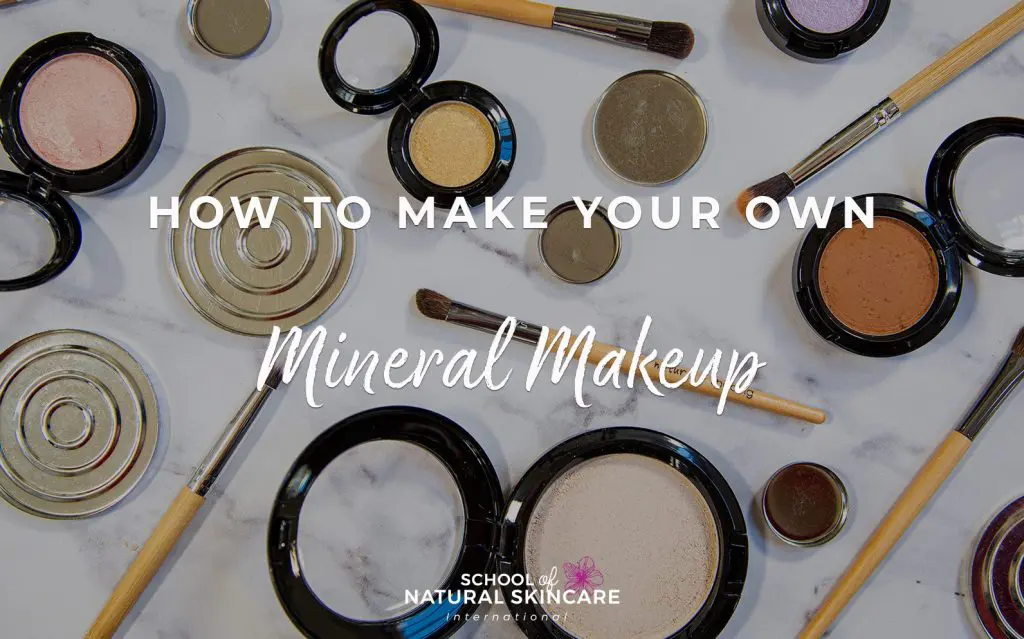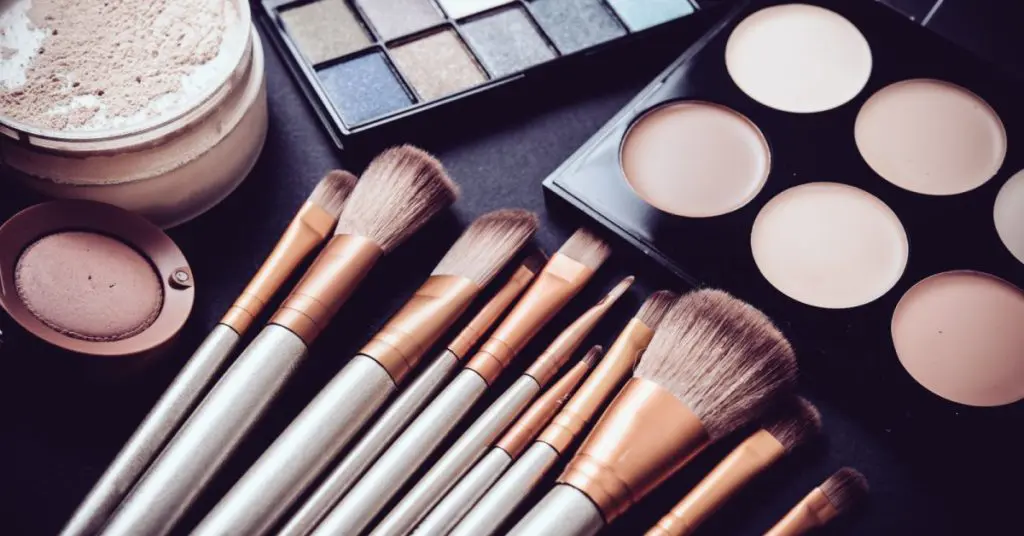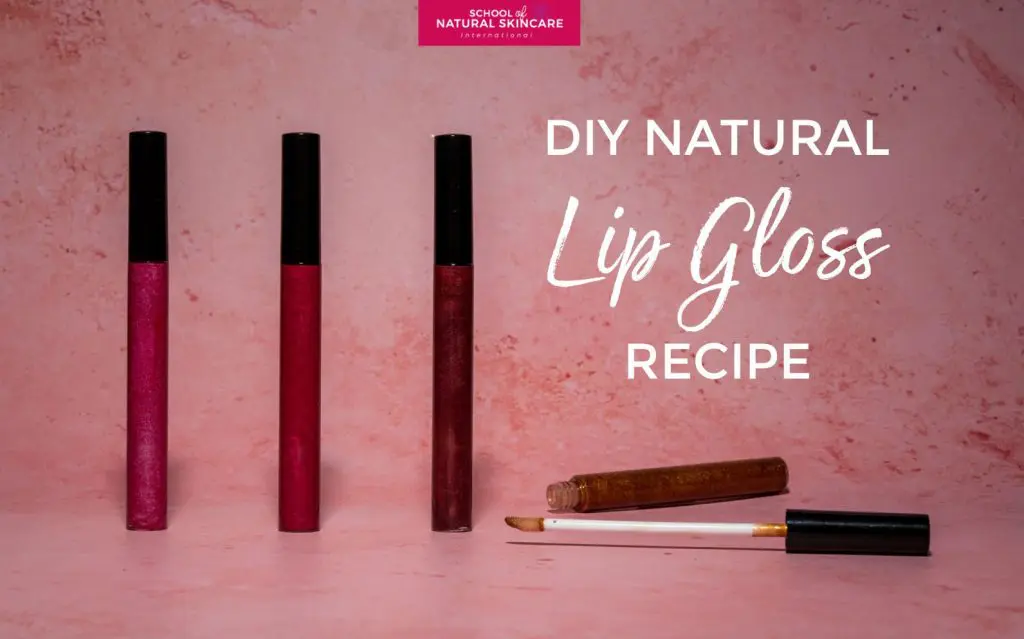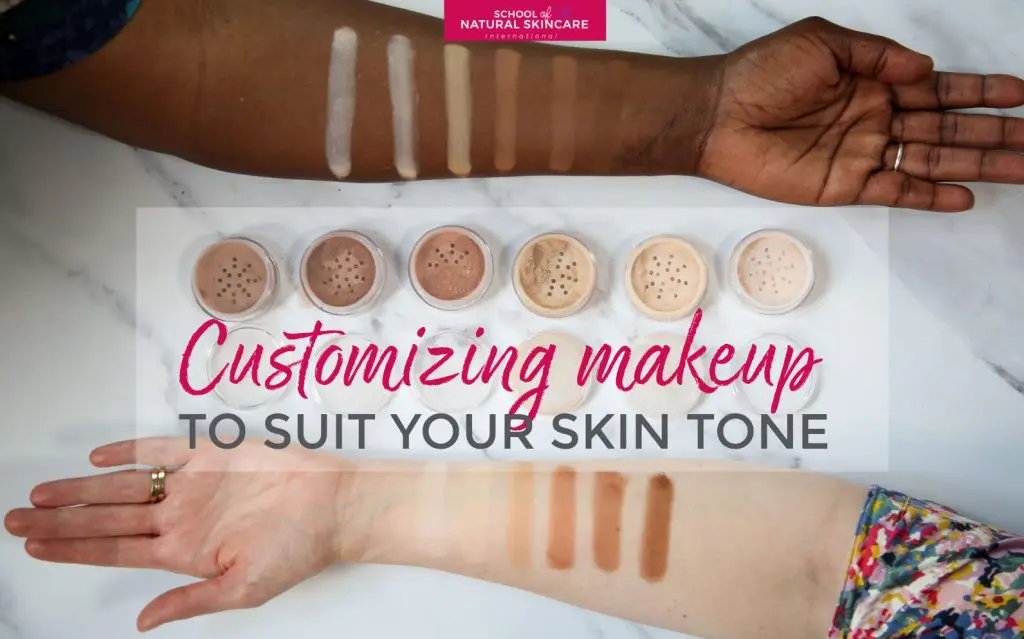A big part of making our own natural cosmetics is mineral makeup, but finding reliable and accurate information about it is hard to come by.
Fortunately, we’ve got you covered at the School of Natural Skincare! It is such an exciting topic to delve into and an amazing skill to develop. You’ll have lots of fun creating your own at home, either for yourself or…who knows…maybe even to sell!?
In this article we’re going to help you get started by looking at
- What is mineral makeup
- The different types of mineral makeup you can make
- How to formulate mineral makeup 101
- The equipment you need to make your own mineral makeup
- And an introduction to formulating color cosmetics
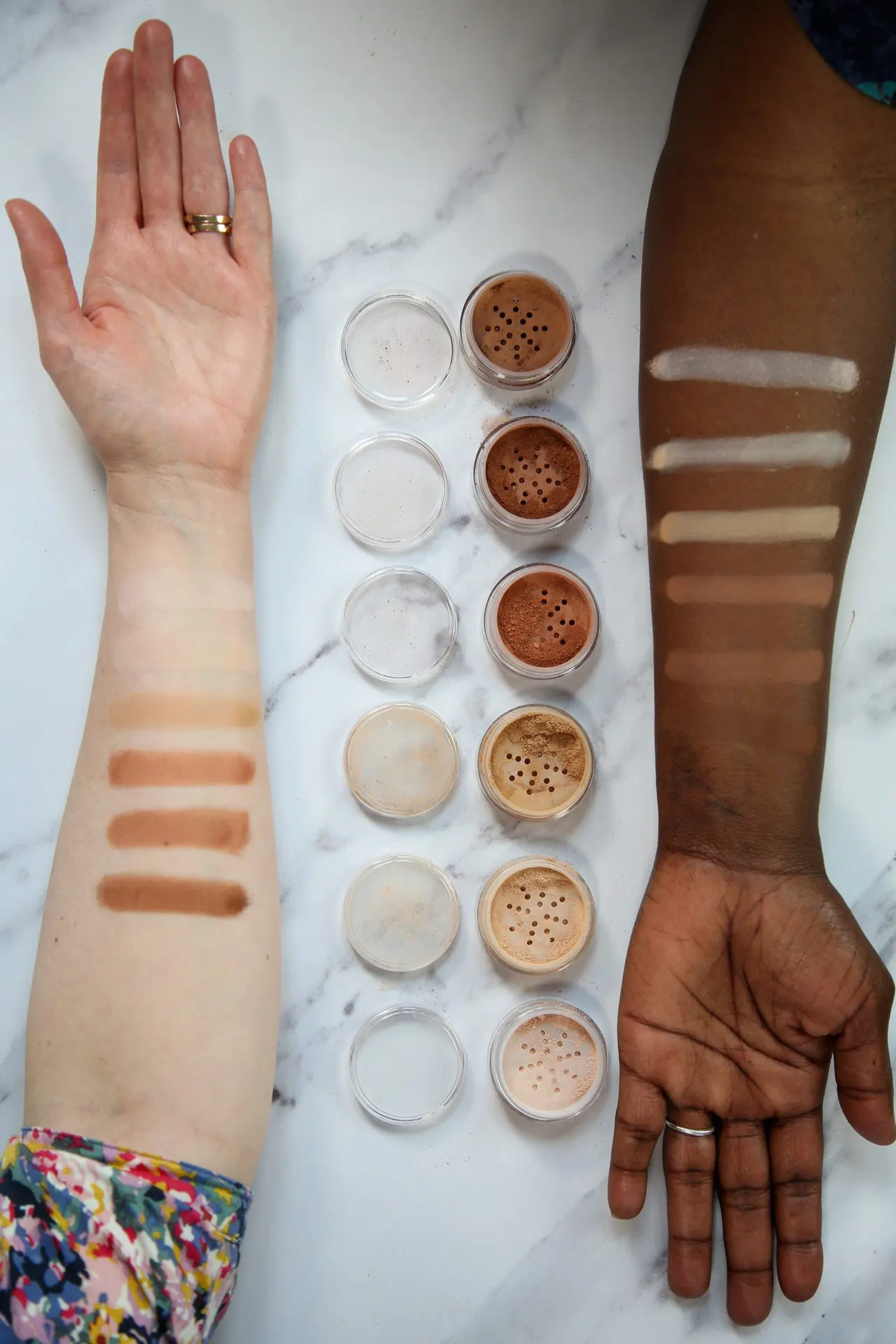
What is Mineral Makeup?
Mineral makeup products are made from dry, powdered ingredients with minimal additives. They contain pure, concentrated base powders to give volume and texture, and pigments to give the desired shade.
Since mineral makeup does not contain water, it also does not contain preservatives, which is great news for people with very sensitive skin, or those seeking ‘preservative-free’ solutions in their cosmetics.
The basic ingredients of mineral and conventional makeup products are the same; pigments that give coverage to the skin and adjust the hue. Those pigments are responsible for the whole function of foundations.
Conventional makeup products tend to contain several auxiliary or supporting ingredients to give the products a specific texture or form (ie emulsion, stick, etc), skin feel and appearance.
On the other hand, many types of mineral makeup, for example mineral foundations, come in the form of pure powders (that can be loose or pressed), and as such require little to no additives, making them especially suitable for sensitive skin.
Since they are very concentrated, a much smaller amount of the foundation is needed for good coverage – 8g of mineral foundation can easily last up to three months.
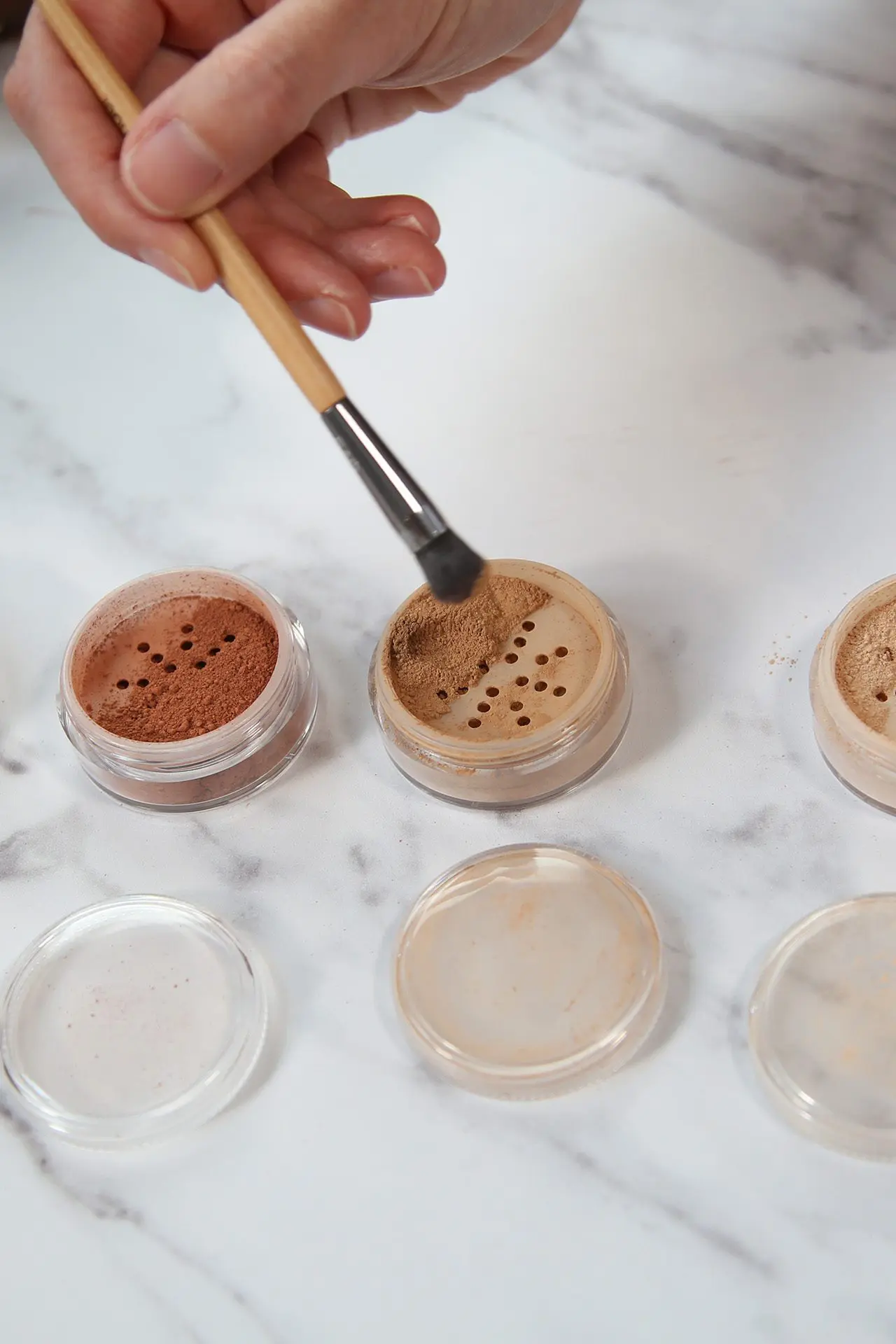
The Different Types of Mineral Makeup
Many mineral makeup products consist of loose or pressed powders. These are the kinds of products we focus on inside our online course, Diploma in Formulating Natural Makeup and Advanced Color Cosmetics.
Once you understand the essential theory of formulating natural mineral makeup, color cosmetics and have the correct equipment to hand, you’ll be all set to go and create your own range of natural mineral makeup products such as:
- Mineral foundation
- Mineral eye shadow
- Mineral blushers, bronzers and highlighters
- Pressed powders
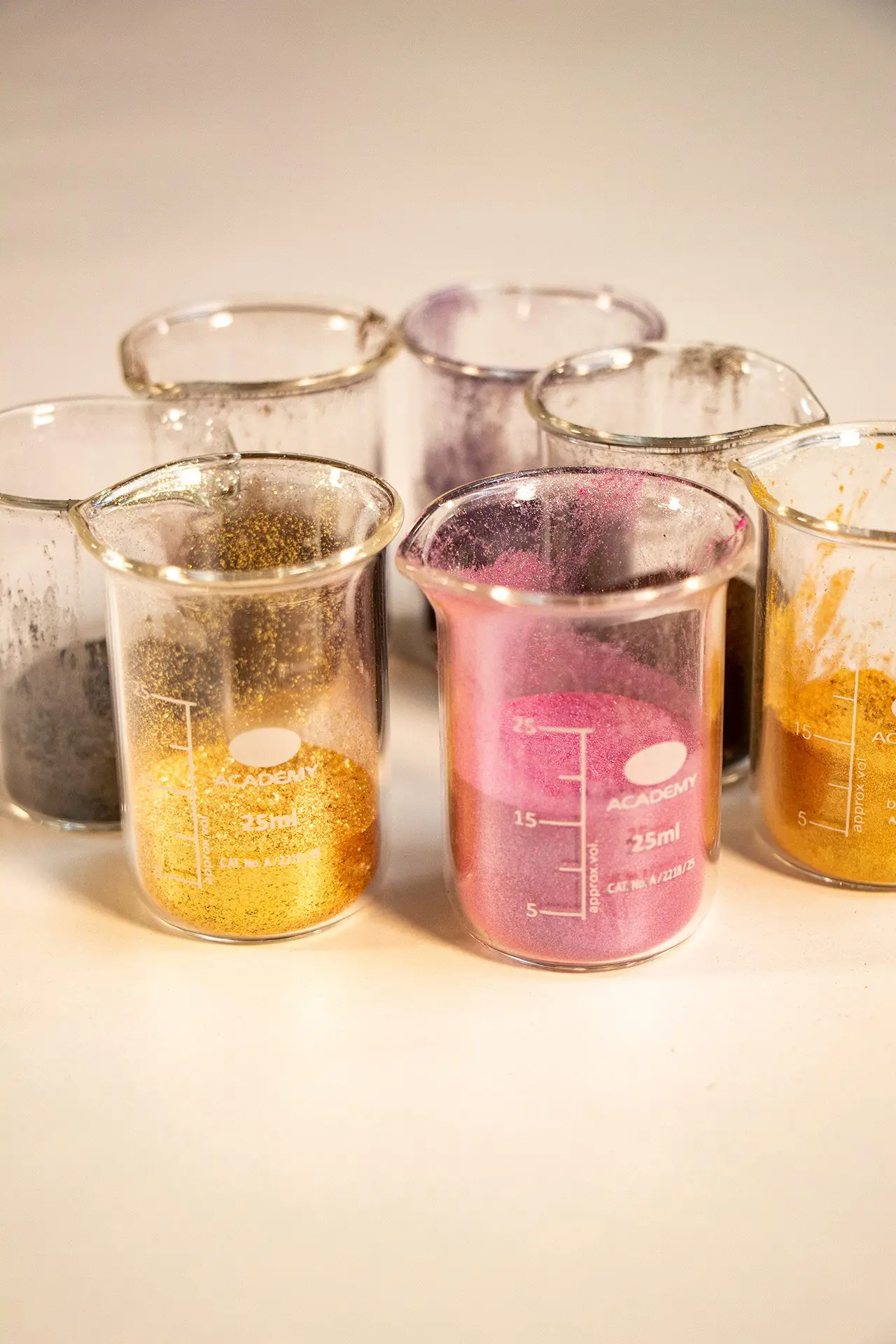
How To Formulate Mineral Makeup 101
If you are familiar with making cosmetic products, you probably already know what a formula is and how to use it. Cosmetic formulas are written in percentages which enables you to scale your batch sizes up or down.
This means you keep the consistency of the product and achieve your desired result. When making a product, the batch is calculated from your percentage formula using a weight unit (eg grams, ounces).
The way you make your mineral makeup products at home might be slightly different to how you might make your skincare and haircare products. It depends on the scale and size of your production, i.e. your batch sizes.
If you are making small quantities of mineral makeup for personal use, you will be operating with very small amounts of ingredients (especially when it comes to adjusting the shade). It will be easier to measure these small quantities of ingredients using teaspoons and other, even smaller, measuring spoons/scoops.
In fact, when starting out we recommend you begin by making only small batch sizes. This enables you to develop your knowledge and skill, and to experiment without worrying about wasting precious ingredients. So it will be worthwhile investing in some simple measuring spoons and scoops.
As you begin to develop larger batch sizes, you will then want to switch to using more accurate measuring devices, such as precision scales. This will enable you to calculate correctly and ensures you create something that conforms to industry standards and regulations.
Our online course, Diploma in Formulating Natural Makeup and Advanced Color Cosmetics, is aimed at getting you started with learning how to make mineral makeup. So, the recipes are written using teaspoons (and fractions thereof) as the measuring unit. They also contain an approximate weight percentage, in case you want to create bigger batches using a precision scale.
If you decide to formulate these products for sale, you will need to be precise with your measurements to conform with cosmetic standards and regulations.
Even if it is not a requirement to have your products safety tested, you still need to make sure that your mineral makeup is safe for use and accurate measurements are then essential.
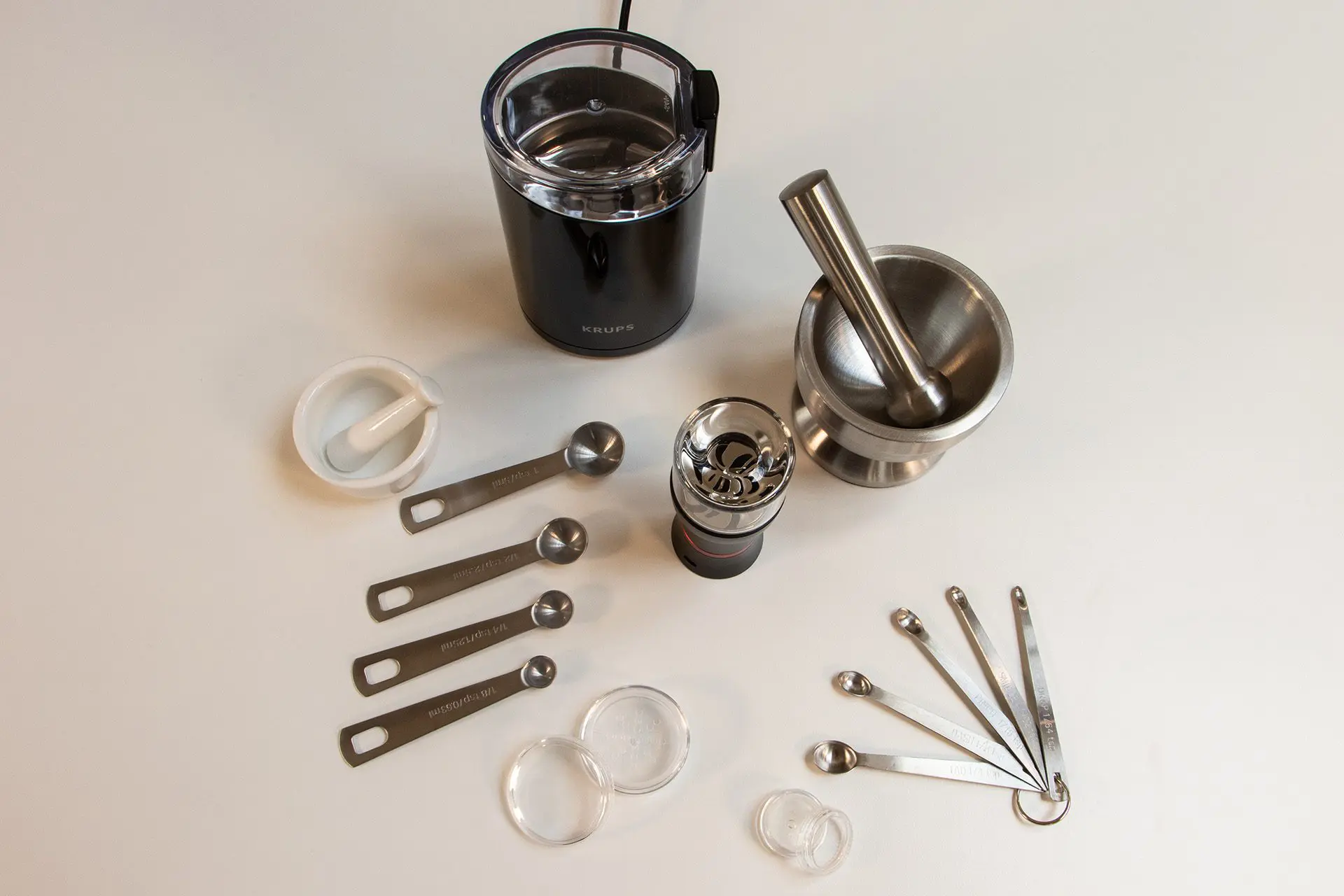
The Equipment You Need to Make Your Own Mineral Makeup
You’ll need a selection of equipment that is a little different to other types of cosmetic products to help you to make your own natural mineral makeup.
Here is a good list to get you started:
- Grinder/mortar and pestle – or coffee grinder for larger batches
- Precision scale (0.01g precision)
- Measuring spoons (the following sizes are useful: 1⁄8 teaspoon, 1⁄4 teaspoon, 1⁄2 teaspoon, 3⁄4 teaspoon, 1 teaspoon – where 1 teaspoon equals 5ml).
- Mini-scoop (0.05ml)
- Protective gloves and a dust mask.
- Small jars (to store powders and pigment mixes in).
- Makeup packaging for finished products.
- Pressing tools. A pressing clamp, small woodworking clamps or small tamper tool (if you wish to press your powders) are good examples.
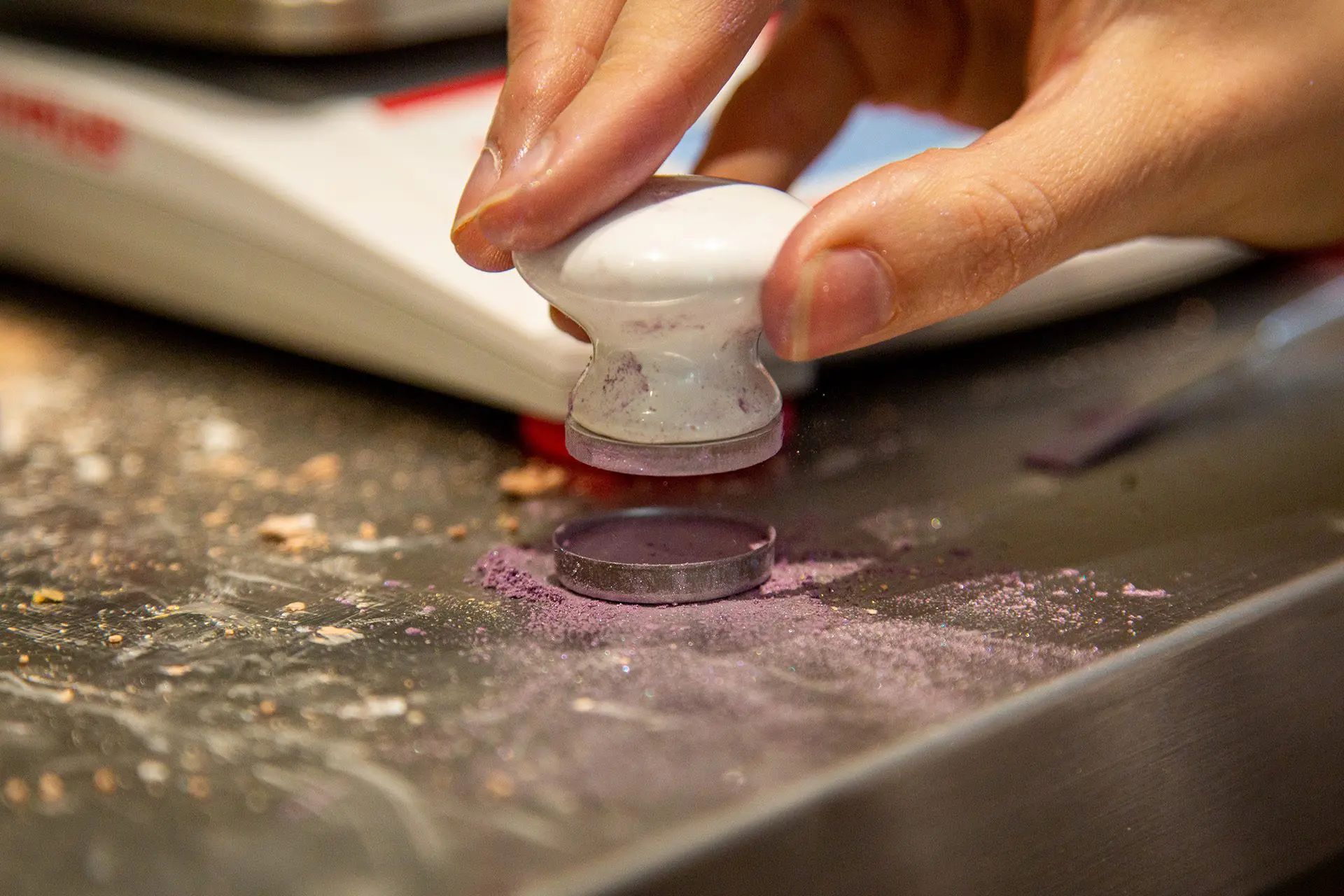
How To Formulate Color Cosmetics
Makeup is often referred to as color cosmetics, as it is the branch of the cosmetic industry that primarily works with different colors.
For this reason, when formulating your own mineral makeup or color cosmetics, it is important to understand color theory.
You’ll need to refer to a color wheel and develop and understand of
- Primary, secondary and tertiary colors
- Colour harmony
- Complementary colors
- Color terminology (hue, tint, tone and shade), and
- Undertones
Fortunately, we cover all of this and so much more in our online course, Diploma in Formulating Natural Makeup and Advanced Color Cosmetics.

